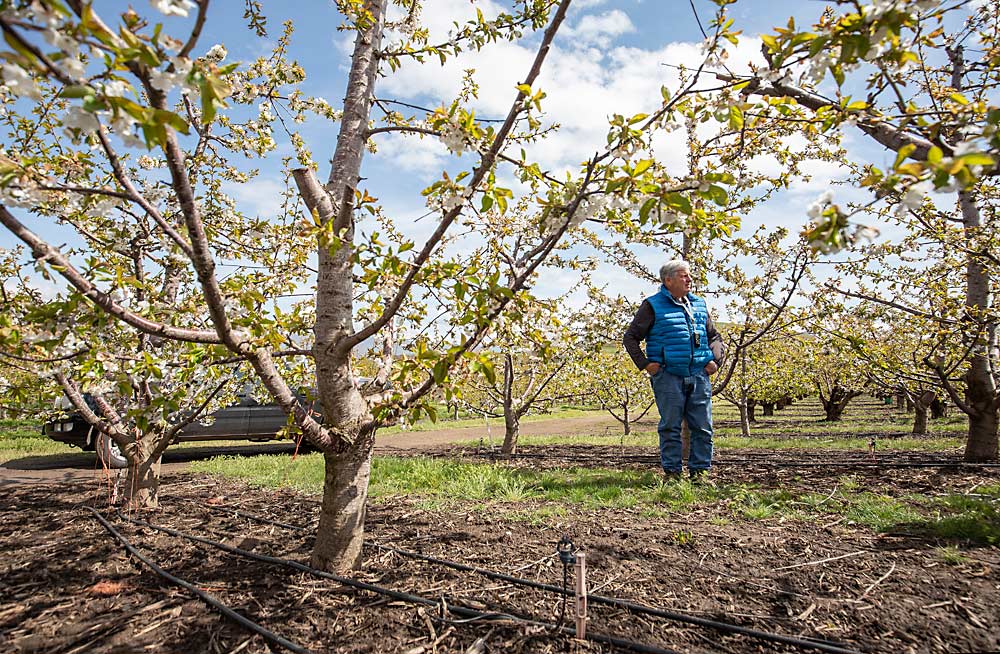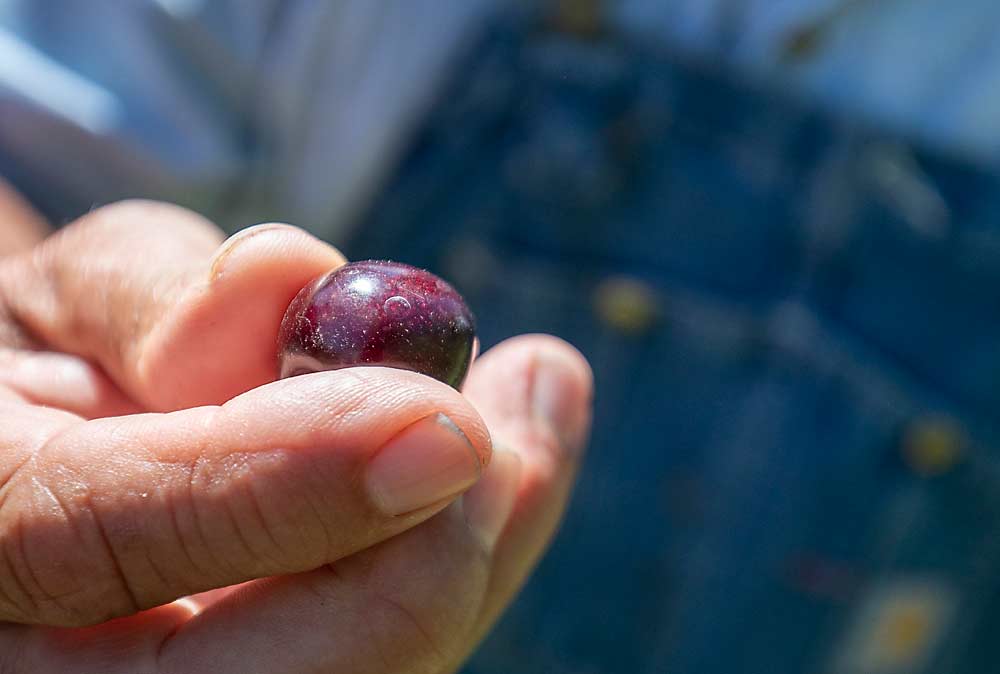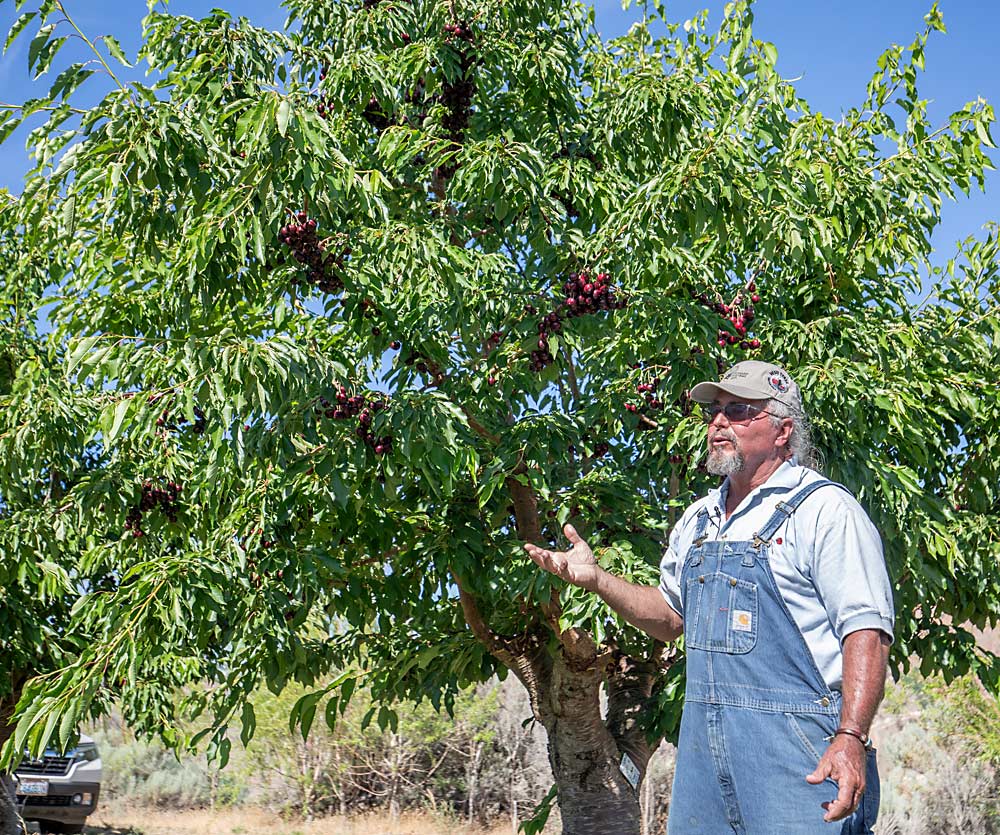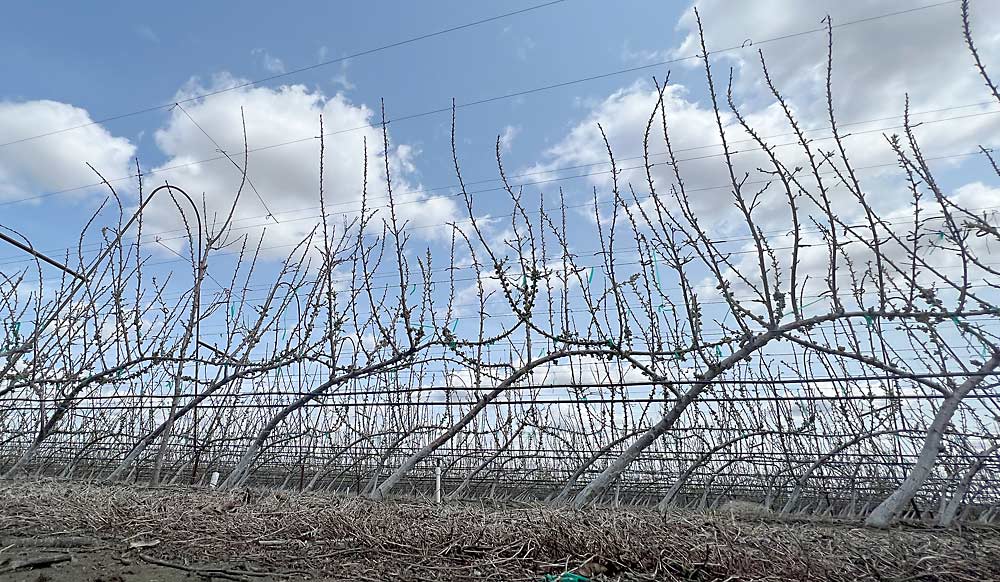
The Black Pearl, a Cornell University cherry cultivar crossed over 30 years ago, is becoming more popular in the Northwest as growers work out the kinks of its growing habits.
Growers in the region have been actively seeking earlier and later varieties in recent years. The Black Pearl, an early-ripening dark cherry, is advertised as Chelan timing, coming off trees 10 or more days before Bing. Northwest growers have found it harvests roughly at Tieton or Coral Champagne timing — still early, but not as early as originally billed.
In recent years, demand has been high.
And that demand has been exceeding supply in recent years, said Jim Adams of Willow Drive Nursery in Ephrata, Washington. To keep up, the company has sourced budwood from other nurseries as far away as Michigan.
Prized for its dark color, firmness and some rain-cracking tolerance, the Black Pearl — NY 8139 — was one of four Pearl series cherries developed by Cornell breeders. The Black Pearl, crossed in 1992 and selected in 1997, is a cross between Vernon and a University of California, Davis, selection later marketed as Coral Champagne.

“The selection was bred under Eastern conditions, which can be challenging — rains, Pseudomonas (bacterial canker), cracking, winter hardiness,” said Susan Brown, one of the breeders who released the variety.
International Plant Management, the Lawrence, Michigan, company headed by Wanda Heuser Gale and licensed by Cornell to commercialize the cultivar in the United States, helped organize trials in Michigan and the Pacific Northwest.
“It’s just slowly gained in popularity as time’s gone by,” Heuser Gale said, and today it’s “definitely the most popular cherry” overall in the company’s portfolio.
Growers in the Northwest, who gleaned most of their lessons by observing an Oregon State University demonstration block in The Dalles, are excited about the variety overall. If they complain, it’s about fruit size. The midsized cherry sets heavy crops, they said, which limits size development if not managed carefully.
Heuser Gale has heard that, too, but size challenges can happen in any cherry, she said. “That’s just part of growing cherries.”
Northwest grower plantings
Mike and Pamela Manning, veteran growers in The Dalles, Oregon, have several blocks of Black Pearl on a variety of semidwarf rootstocks, but they have settled on Gisela 6 as their favorite.
After five years, the trees have reached full production and settled down into good returns and high packouts, Mike Manning said. The fruit also has resisted rain splitting, even in 2022 when his farm received a lot of rain.
The cherry sets heavily, necessitating hard pruning to avoid overset, he said. But so far, all of his cherries have reached an adequate size of 10 or 10.5 row.
He is still learning about the variety, along with the rest of the industry.
“A lot of people are trying to do Black Pearl, but nobody knows what they’re looking at,” Manning said.

Wenatchee, Washington, orchardist Kyle Mathison called the Black Pearl a consistent producer of firm fruit before the Fourth of July holiday. They top out at 10.5 row size, “not huge,” but big enough for Walmart specs, he said.
Mathison, known in the industry for using elevation to stagger his harvest timing, grafted a block of Sweethearts to Black Pearl in 2016 to capitalize on the early market; the block sits at 1,400 feet above sea level.
Tri-Cities-area farmer Shawn Gay planted about 300 Black Pearl trees on Gisela 6 in test rows about 12 years ago but struggled to coax size out of them, no matter how hard he pruned or thinned. So, after about five years, he grafted the rows to Benton to match the rest of the block.
Now that the cultivar is more popular, he wants to give it another try. Also, the timing fits with his labor schedule, even if it’s not as early as first billed.
“This spring, I’m doing some more sample trees in different locations, different soils and different rootstocks, to see if that’s what we missed,” he said.
To try to remedy the size issue, Olsen Bros. Ranches near Benton City, Washington, planted 17 acres of Black Pearl in 2021 on a UFO system, said orchard manager Keith Oliver. His theory: The upright fruiting branches will deliver more vigor and less precocity than horizontal branches in a V-trellis, therefore allowing individual cherries to grow larger.

A UFO system also lends itself to string thinning. This spring, Oliver and his supervisors played with different rates of thinning, searching for balance between size and productivity.
“This is the artistic part,” Oliver said.
Black Pearl is a good fit for Jim Harris, whose family grows cherries near Roosevelt, Washington, an early site along the Columbia River. His family planted 80 acres of Black Pearl after watching the variety at the OSU block for several years, replacing Tietons and some apples.
His trees are in their fourth and fifth years on Gisela 12 and, so far, have not struggled with size. But the cherries set heavily, and the farm crews may bloom thin this year.
He would prefer that problem than not having enough fruit set, he said. “You can always bloom thin.”
—by Ross Courtney






Leave A Comment